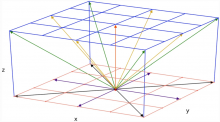
Abstract
Neutrino-matter interactions play a key role in binary neutron star mergers. Thermodynamics conditions at the surfaces where neutrinos decouple from matter influence neutrino spectra, ultimately affecting the evolution of the remnant and the properties of the ejecta. In this work, we post-process results of general relativistic merger simulations employing microphysical equations of state and approximate neutrino transport to investigate the thermodynamics conditions at which weak and thermal equilibrium freezes out (equilibrium surfaces), as well as conditions at which the transition between diffusion and free-streaming regime occurs (diffusion surfaces). We find that the rest mass density and the neutrino energy are the most relevant quantities in determining the location of the decoupling surfaces. For mean energy neutrinos (⟨Eνe⟩≈9 MeV, ⟨Eν¯e⟩≈15 MeV, ⟨Eνμ,τ⟩≈25 MeV), diffusion surfaces are located around 1011g cm−3 for all neutrino species, while equilibrium surfaces for heavy flavor neutrinos are significantly deeper (several 1012g cm−3) than the ones of ν¯e and νe (≳1011g cm−3). The resulting decoupling temperatures are in good agreement with the average neutrino energies (⟨Eν⟩∼3.15 T), with the softer equation of state characterized by systematically larger decoupling temperatures (ΔT≲1 MeV). Neutrinos streaming at infinity with different energies come from very different regions of the remnant. The presence of a massive NS or of a BH in the remnant influences the neutrino thermalization process.